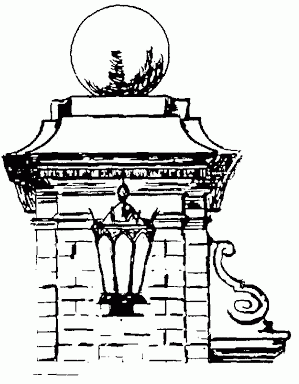New Entrance Landscaping
- Ian Hagemann
- May 30, 2019
- 3 min read
The Trustees of Hillcrest are charged by the Indenture with “planting and caring for trees and shrubs” within the subdivision, for the “common benefit” of our residents. The City of Clayton took over responsibility for the area deeded to them in 1996, while the Trustees retain responsibility for areas in the City of St. Louis.
In 2012, a former HHA officer proposed that HHA adopt the landscaping of the four beds at the Skinker entrance to Aberdeen and Arundel. A professional gardener was retained to design, install and maintain these areas at HHA expense. Over time, the design began to drift due to the incursion of weeds and the cumulative adverse effects of weather, traffic and other environmental factors. Having received some complaints about the quality of the landscaping and design, coupled with the anticipated road resurfacing project, the Trustees decided in 2015 to wind down our engagement with the landscaper and pursue a refreshed design for these flower beds.
Various ideas were presented to the Trustees over the years. Some neighbors preferred a native prairie concept that would reflect the Kennedy Woods in Forest Park. Others advocated for a more formal boxwood garden. There was general agreement that passers-by enjoy seeing flowers, and color more generally. We also received a recommendation that there be some ascending scale to the design as it progresses from street level at Skinker towards the tall monuments.
To protect the plants that would eventually be installed, the Trustees chose to defer the landscaping project until after the street resurfacing in summer 2017. Out of budgetary prudence, the project was deferred for a further year. Over the winter of 2018-2019, the Trustees obtained a design for the entrance flower beds by Michael Stephan, landscape architect at the Garden Heights Nursery. Many neighbors have relied on this nursery over the years and we felt it was desirable to patronize a local business.
The designer was provided with a long list of requests and recommendations. We asked for plants that would be resistant to urban conditions, including exhaust, salt and dirt from the busy adjoining street, as well as foot traffic and pet waste from the sidewalk. We sought plants that would be low maintenance, drought-resistant, lush, sophisticated, context-appropriate, tidy, colorful, appealing in multiple seasons, with intermediate height in order to give a sense of scale without obstructing driver visibility. We attempted to use existing plants, but they did not meet requirements for low maintenance (many of them requiring deadheading) and tidiness. Moreover, it was almost impossible to identify and locate (in winter!) the exact plants that were present, even using photographs.
The draft design was presented at neighborhood focus groups convened in early April 2019 and recommendations were incorporated. The plan was also reviewed by Peter Stevens, our resident botanist, who has contributed greatly to our neighborhood landscaping efforts over the years.
In the final design, the edge closest to the Skinker sidewalk is lined by holly “Skallywag”, which was chosen to maintain shape, color and appeal in all seasons, give a sense of scale to the beds, and discourage pedestrian or animal trampling. At the “points” of these beds, apricot drift roses provide color and protection. Hydrangea “Bobo” and barberry “Concorde” are placed at the center of the beds. These plants are frequently included in designs submitted to the Trustees for review and should provide some cohesion with neighbors’ landscaping. Sedge “Evergold” forms the rounded inner edge of the beds.
Quiet Village Landscaping was recommended to us by Garden Heights for installation of this design. The previous plants were removed, the soil was improved with garden soil containing compost and manure, and installation was overseen by the designer. This occurred in late April 2019.
Our intention is to have professional maintenance performed twice per year. While the plants are tolerant to drought, the neighbors at the corners have kindly offered to water the plots twice per week during the first summer while the plants are taking root, and as needed thereafter (1x/week). We have a one-year guarantee on plant life. The plan does not call for pesticides or weed killers, although the designer did recommend applying a pre-emergent weed preventer. There are opportunities to add annuals or bulbs for additional color and interest.
In summer, the plan requires shaping of the roses and barberry. In winter, light mulching and pruning is required, including shaping the holly and barberry, cutting back the roses, and pruning the hydrangeas.
Neighbors are always welcome to volunteer for weeding; please see Ian Hagemann or Emily Mulvihill to inquire. We hope you will enjoy the new plantings and will agree that they represent a handsome addition to the Hillcrest landscape.





Comments